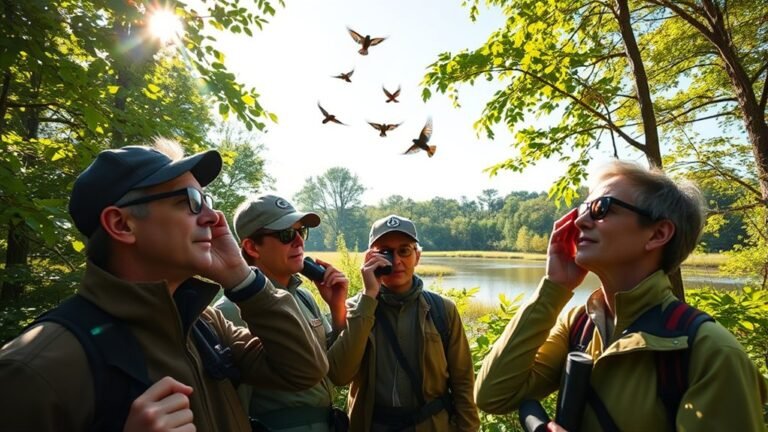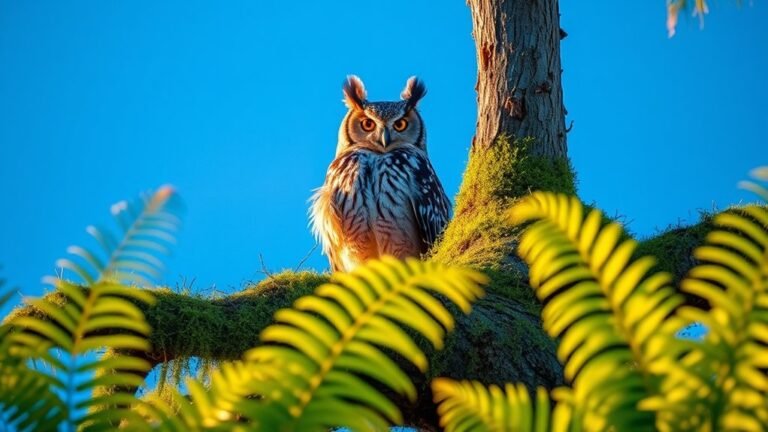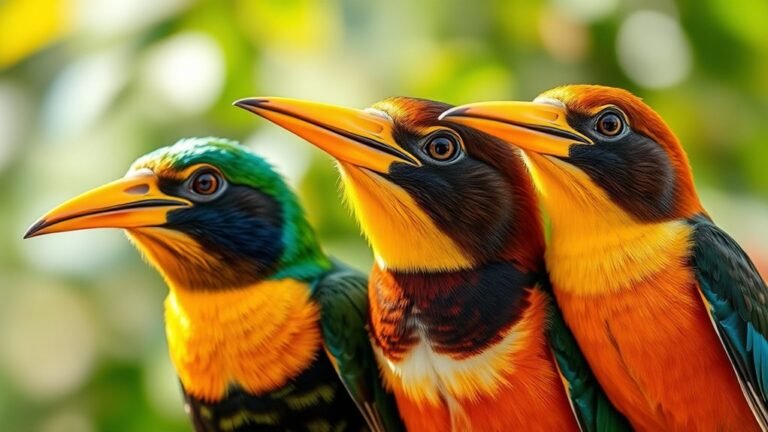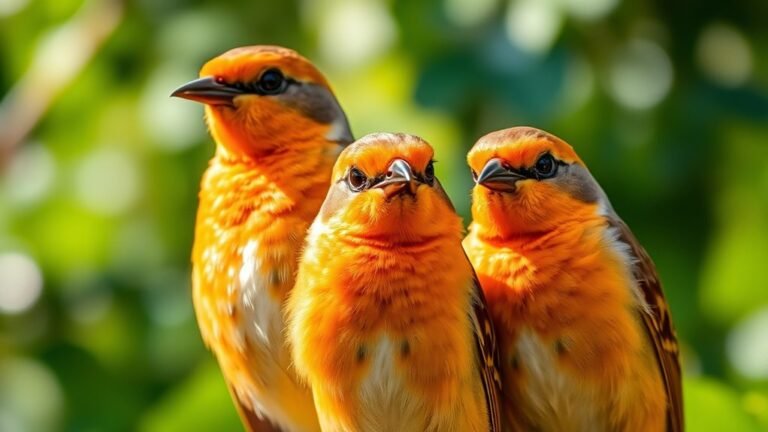Ducks of California: Species and Habitats
California has many types of ducks because of its different places, or habitats. You can see Mallards in city parks easily. They are common there. In quiet marshes, you will find Gadwalls. Each duck species is special and has ways to survive in its home.
Learning about what each duck needs can help us protect them. It is important to look at the whole picture. Urban life changes nature, and it affects all ducks. What helps them live in a busy world?
Let's keep exploring the lives of these ducks and how we can help them thrive.
A Quick Overview
California has many different places that ducks love. You can find common mallards, gadwalls, pintails, and some special ducks.
Common mallards are easy to spot. The males have bright green heads, especially during mating season.
Gadwalls like to hang out in shallow marshes. They are calm and have a nice gray-brown color.
Pintails are graceful swimmers. They help keep wetlands healthy by moving between different areas.
There are also special ducks like the California Black Duck and the Mandarin Duck. These ducks are rare and have bright colors, making them fun to see.
In California, ducks come in a variety of types, and they make our outdoor spaces lively and interesting.
Overview of Duck Species in California

California has many different areas where ducks live. Its waters and wetlands are perfect for many duck species. During migration, you can see a wide variety of ducks stopping here on their way to breeding areas.
Some ducks have learned to live in cities. They now visit parks and waterways, showing how well they can adapt to human activities. This shows us why it's important to keep their habitats safe.
When we learn about the needs and behaviors of these ducks, we can help with conservation efforts. Talking with local groups about these ducks can help everyone feel connected and responsible for protecting their homes.
Enjoy observing these ducks and their lives; it can be a fun way to appreciate nature!
Common Mallards: The Most Recognizable Duck
The Common Mallard is a well-known duck in California. These ducks are easy to spot and live in many places like parks and wetlands. Watching how they act and where they build their nests shows us how clever and social they are.
- Male mallards have bright green heads during mating season.
- They like to form strong pairs and often come back together year after year.
- They usually build their nests in thick plants near water, which helps keep them safe.
- Mallards like to dabble on the water's surface to find food.
Mallards are adaptable and can thrive in different environments. If you see them in your area, take a moment to appreciate their beauty and cleverness!
Gadwalls: Habitat Preferences and Identification

Gadwalls are special ducks that play an important role in California's wetlands. They like to live in shallow marshes, ponds, and estuaries. Here, they search for tasty plants and small bugs to eat.
Gadwalls are calm and often swim by themselves or with a partner. When it's time to mate, male gadwalls show off their beautiful feathers to attract females. They've a unique gray-brown color and a white patch on their wings that help you tell them apart from other ducks.
Pintails: Graceful Swimmers of Wetlands
Pintails are lovely ducks that swim smoothly in the calm waters of California's wetlands. They're known for their beauty and play an important role in nature. Their special migration patterns help keep the wetlands healthy as they move long distances each season.
These ducks like to hang out in groups and enjoy being social. They've smart ways to find food that suit their surroundings. Pintails are also sensitive to changes in their environment, which helps scientists understand the health of wetlands.
Many people work with pintails to help restore their habitats and keep them safe. Seeing pintails gliding on the water is a joy. Their graceful movements remind us how important it's to protect these birds and their homes.
Teal Species: Diversity and Distinct Features

California is home to many types of teal birds. Each type has special features that help them live in different places. For example, the Northern Shoveler and the Green-winged Teal show off unique colors and behaviors.
The Northern Shoveler has a bright green head and a wide bill. This bill helps it find food in the water. The Green-winged Teal shines with a mix of chestnut and green colors.
Both birds have small bodies that help them move quickly through wet areas. These traits help teals survive and make California's wetlands more interesting.
When you watch these birds, you can appreciate their differences and understand their important roles in nature.
Specialty Ducks: Rare and Interesting Finds
California has many colorful ducks in its wetlands, but it also has some special and rare ones that are exciting to see.
If you like watching birds, pay attention to these unique ducks:
- California Black Duck: This duck is a special type of the American Black Duck. It has some different colors in its feathers.
- Mandarin Duck: This duck looks like a painting! With its bright colors, it sometimes visits our waterways.
- American Wigeon: This duck makes a fun whistling sound. It has a round head and eats in a very special way.
- Redhead: This duck is known for its bright red head and pretty shape. It likes to dive for food.
These special ducks make California's wetlands more exciting.
If you're lucky, you might get to see one of them!
Conservation Efforts for California's Ducks
California's duck species face many challenges. Because of this, conservation efforts are very important. Habitat restoration helps create safe places for ducks to breed and feed. Groups work hard to improve wetlands and bring back natural ecosystems so ducks can flourish.
Breeding programs also help. These programs aim to boost the number and genetic variety of at-risk duck species. They protect existing habitats and teach the community about duck conservation.
When people learn about these efforts, they feel more connected and want to help. By joining these programs, you can help keep California's duck populations strong.
Getting involved lets you enjoy nature and play a part in saving our unique ducks for the future.
Frequently Asked Questions
What Are the Best Times to Spot Ducks in California?
To spot ducks in California, the best times are early in the morning and at twilight. In the morning, ducks move around as they migrate. In the evening, they gather together. Going out during these times helps you see many different types of ducks doing their daily activities. Enjoy watching them!
How Do Ducks Adapt to Changing Climates?
Ducks adapt to changing climates in smart ways. They change where they go to find places that are good for living. For example, when the weather gets warmer or colder, they might fly to new ponds or lakes.
Are Any Ducks Native to California?
Sure! California is home to some native ducks. You can spot the American Black Duck and the Northern California Pygmy Goose. These ducks live in different areas of California. They have special traits that help them survive in the state's unique environment. Enjoy watching these fascinating birds in their natural habitats!
What Food Sources Do California Ducks Prefer?
California ducks like to eat many things. They enjoy aquatic plants, which grow in water, and they also eat insect larvae. As the seasons change, ducks move to find food. They change their eating habits based on what is available. This helps them stay healthy all year long, no matter where they are.
How Can I Help Support Local Duck Populations?
You can help local duck populations in a few simple ways. First, work to protect their homes, such as ponds and wetlands. Keeping these areas safe is important for the ducks to live and thrive.
Join in on community events focused on nature. These activities can bring people together and make your community stronger. You can plant trees, clean up parks, or build shelters for ducks. Every little effort counts!

Luna is the passionate founder and author of Birds and You, a website dedicated to sharing her love for birds with fellow enthusiasts. Through her engaging articles and guides, she aims to educate and inspire others to explore the fascinating world of birds. When she’s not writing, you can find Luna observing birds in their natural habitats or sharing beautiful bird photography on Pinterest. Join her on this journey to celebrate and protect our feathered friends!







